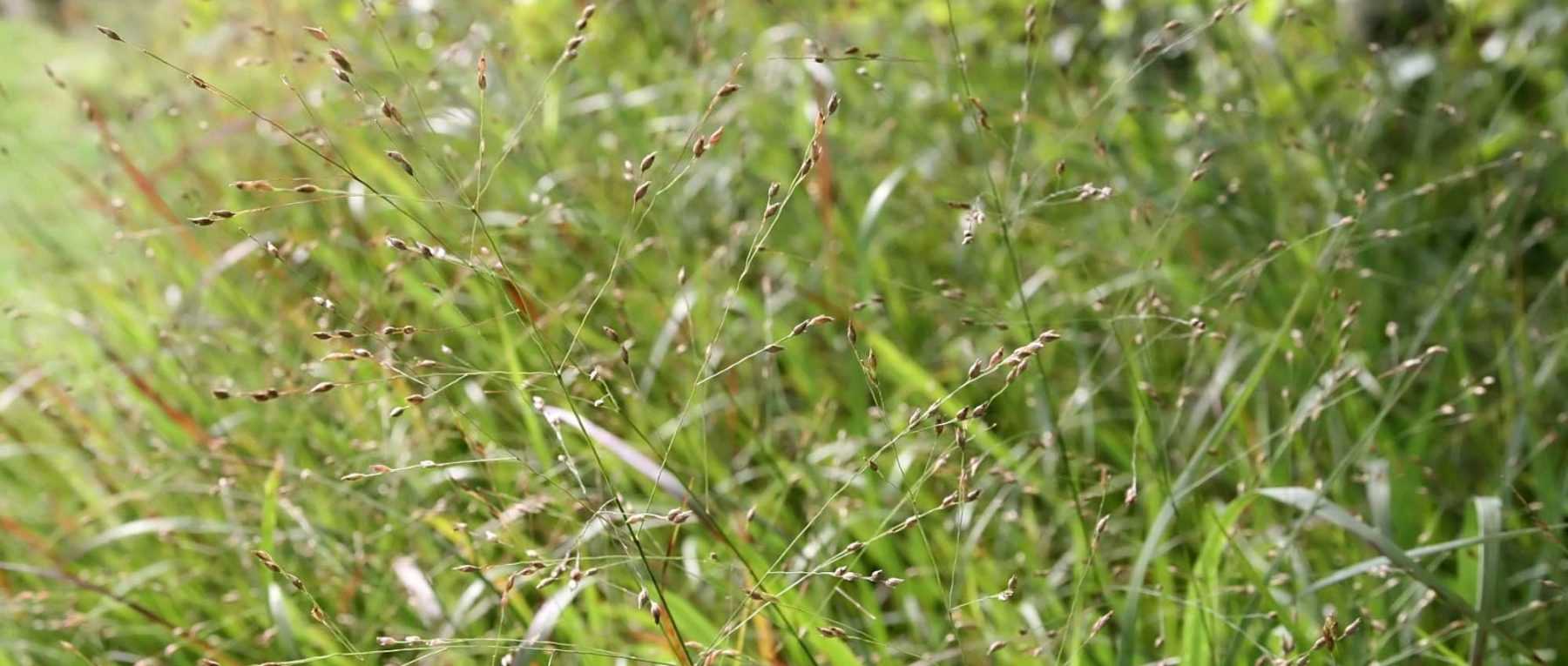
Panicum: Planting, Growing, Dividing and Care
Contents
Panicum in a nutshell
- Panicum are ornamental grasses prized for their beautiful upright, vertical habit
- They produce delicate, airy panicles during late summer flowering
- Their leaves display varied colours depending on the variety, changing hues throughout the year
- These are easy-to-grow perennial plants, long-lasting and undemanding
- They’re invaluable for adding structure and vertical interest to borders!
- These plants offer year-round interest, even in winter
Our Expert's Word
Panicum are ornamental grasses valued for their upright silhouette, decorative foliage that turns beautiful shades in autumn, and their light, airy paniculate flowering. These are truly graphic and interesting plants for structuring borders. They remain decorative in the garden throughout the year, even in winter, as their foliage dries out and takes on a brown-yellow hue while staying in place.
The most widely cultivated for its ornamental qualities is Panicum virgatum, or Switch Grass. It comes in a wide range of varieties, offering different foliage tones. Some, like ‘Rotstrahlbusch’, have green leaves tinged with red-purple, while others, such as ‘Dallas Blues’, have bluish foliage.
Panicum thrives in sunny positions and ordinary, well-drained soil. Nevertheless, they are versatile plants, capable of adapting to various conditions. They are easy to grow, require little maintenance, and are rarely affected by diseases or pests. These are robust and very hardy plants. They can be easily propagated by division.
Description and botany
Botanical data
- Latin name Panicum sp.
- Family Poaceae
- Common name Switchgrass
- Flowering between August and October
- Height generally between 1 and 2 metres
- Sun exposure full sun
- Soil type well-drained, fairly ordinary, rather calcareous
- Hardiness between – 25 and - 30 °C for most varieties
The Panicum genus includes over 440 species of grasses that can be annual or perennial. The most widely cultivated for its ornamental value is Panicum virgatum. Through hybridisation, it has given rise to numerous varieties, which generally offer stunning coloured foliage, which may be bluish, or marked with red or purple, and whose hues tend to intensify in autumn as temperatures drop.
Panicum virgatum is a long-lived perennial plant, native to North America. It is found from the southern United States to Mexico. It grows mainly in prairies, but also at forest edges, along roadsides, sometimes in damp areas and along watercourses.
Most Panicum species originate from tropical regions, but some are also naturally present in temperate regions of the Northern Hemisphere.
Panicums are ornamental grasses, belonging to the large Poaceae family (over 11,500 species), alongside meadow or lawn grasses, other ornamental grasses (Pennisetum, Stipa, Fescue…), and cereals. Millet is in fact an annual Panicum (Panicum miliaceum) cultivated as a cereal for food. Similarly, the species Panicum maximum is often grown as fodder in tropical regions.
In France, there are 7 species of Panicum found in the wild, some of which originate from other parts of the world but have naturalised in metropolitan areas. This is the case, for example, with Panicum capillare, an annual species with a particularly fine and delicate appearance, native to North America.
Panicums are plants that form dense clumps of foliage, with a fairly upright and narrow shape, slightly flared towards the top of the stems (even more so when the plant is in full flower!). Panicums are graphic plants, truly interesting for their upright and airy silhouette. They are useful for structuring borders, bringing movement and lightness. Generally, Panicums grow to between 1 and 2 metres in height. Some varieties have a fairly natural and flared shape, while others, such as ‘Northwind’, stand out for their more upright and rigid form. The contrast with the airy flowering creates a very beautiful effect. Panicum virgatum is commonly called “Switchgrass”, which also refers to its upright, vertical form.
Panicum starts its growth late, at the end of spring. It grows and develops mainly during the summer season. Its flowering occurs in late summer, between August and October. Delicate inflorescences then unfold above the foliage.
The flowers are gathered in panicles measuring between 40 and 60 cm in length, often with purplish or reddish hues. These panicles are finely branched and have a fragile, very delicate appearance. The inflorescences seem to consist of small beads placed on very fine threads; the stems and their branches appearing almost as thin as hairs! The panicles are borne at the ends of the stems, above the foliage, adding height and volume to the Panicum clumps.
The lightness and flexibility of the inflorescences allow them to sway in the wind, bringing movement to borders. The effect is particularly interesting when Panicums are planted in large groups.
Panicums are appreciated for their very delicate and airy flowering. The panicles consist of a multitude of small spikelets, often purplish, each composed of two flowers: the upper one being fertile while the lower one is sterile. The flowers are tiny, difficult to observe clearly with the naked eye.
The flowers are wind-pollinated, with pollen carried from one plant to another.
The flowering stems of Panicums can be cut and incorporated into bouquets. They will add volume and lightness, enhancing larger, more colourful flowers (lilies, roses, dahlias, peonies…). They can also be used in dried flower arrangements.


The delicate flowering of Panicum virgatum ‘Rehbraun’ (photo J. Hagstrom) / detail of the flowers of Panicum virgatum (photo Matt Lavin)
As with many grasses, the leaves of Panicums are linear, very long and thin. They generally measure between 40 and 80 cm in length. The central vein is well marked, thick, and allows the foliage to retain an elegant, fairly rigid shape without drooping too much. The leaves of the ‘Northwind’ variety are wider than those of other Panicums.
The leaves are a real attraction for the colours they take on, which can vary greatly depending on the cultivated variety. Panicums indeed offer a real diversity in terms of foliage hues. They make it easy to create beautiful colour effects and contrasts in the garden. The tones remain fairly soft and natural, however. In the species-type, the leaves have a lovely bright green colour. Many varieties have leaves beautifully tinged with dark red, particularly at the tips of the foliage, creating a very beautiful gradient or contrast. Others, such as ‘Dallas Blues’, have blue-grey foliage with a slightly metallic hue. The variety ‘Heiliger Hain’, is remarkable for its superb colours, blending green and reddish-purple with hints of violet-blue.
Panicum foliage changes colour over time, often taking on very beautiful hues in autumn: some varieties then have foliage that turns yellow or bright reddish-purple. These grasses are perfect for creating a beautiful autumn scene, alongside late-flowering plants and others whose foliage changes colour at the end of the season. Panicums colour up mainly as temperatures drop, approaching winter. Some varieties, such as ‘Kulsenmoor’, take on a lovely bright red hue, while others, like ‘Dallas Blues’ or ‘Prairie Sky’, retain their bluish colour.
With the arrival of cold weather and winter, the foliage clumps dry out and take on a light brown – straw yellow colour. The plant then enters dormancy and will not resume growth until spring. If left untrimmed, the foliage clumps will remain in place during winter, allowing the plant to retain ornamental interest even in this season. Panicums have the advantage of being a structural element in the garden even in winter! It is therefore best to wait until early spring to cut back the foliage.


Panicum leaves take on very beautiful colours! Panicum virgatum ‘Shenandoah’ (photo Peganum), Panicum virgatum ‘Kulsenmoor’, and Panicum virgatum ‘Squaw’
The root system of Panicum virgatum is fibrous and rhizomatous. The roots penetrate deep into the soil. This is undoubtedly what makes it highly drought-resistant and able to tolerate poor soils.
In autumn, after flowering, Panicums produce seeds. Their panicles remain decorative in form and turn beige, the flowers giving way to numerous small dry fruits, called caryopses, generally less than 6 mm in length. These are indehiscent dry fruits, which do not open at ripeness, each containing a single seed. Panicums can self-seed in the garden.
Read also
Planting ornamental grassesThe main varieties of Panicum
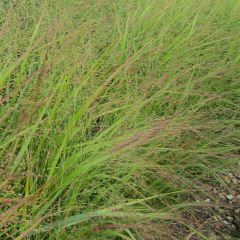
Panicum virgatum Rehbraun - Switchgrass
- Flowering time August, September
- Height at maturity 1,20 m
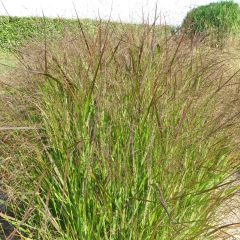
Panicum virgatum Squaw - Switchgrass
- Flowering time September to November
- Height at maturity 1,30 m
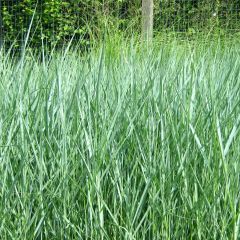
Panicum virgatum Prairie Sky - Switchgrass
- Flowering time September to November
- Height at maturity 1,50 m
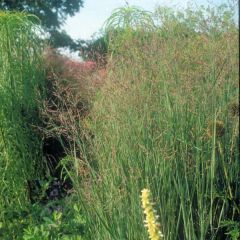
Panicum virgatum Heavy Metal - Switchgrass
- Flowering time September to November
- Height at maturity 1,20 m
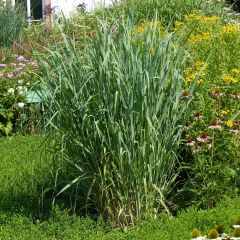
Panicum virgatum Dallas Blues - Switchgrass
- Flowering time September to November
- Height at maturity 1,70 m
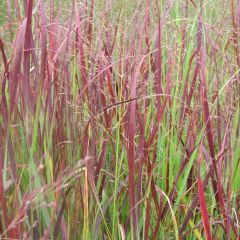
Panicum virgatum Kulsenmoor - Switchgrass
- Flowering time September to November
- Height at maturity 80 cm
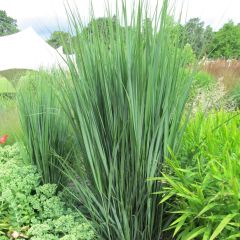
Panicum virgatum Northwind - Switchgrass
- Flowering time September to November
- Height at maturity 1,70 m
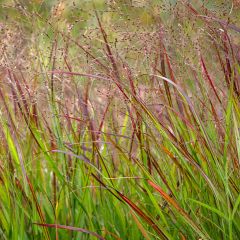
Panicum virgatum Shenandoah - Switchgrass
- Flowering time September to November
- Height at maturity 70 cm
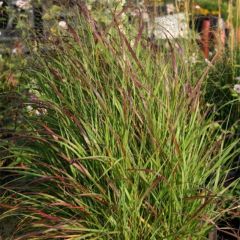
Panicum virgatum Rotstrahlbusch - Switchgrass
- Flowering time August, September
- Height at maturity 1,20 m
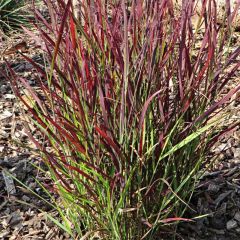
Panicum virgatum Sangria - Switchgrass
- Flowering time September to November
- Height at maturity 45 cm
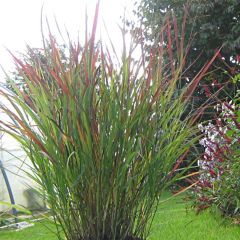
Panicum virgatum Cheyenne Sky - Switchgrass
- Flowering time September to November
- Height at maturity 80 cm
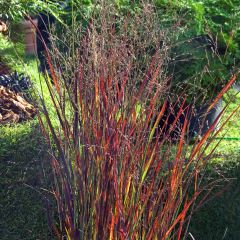
Panicum virgatum Heiliger Hain - Switchgrass
- Flowering time September to November
- Height at maturity 1,20 m
Discover other Panicum
View all →Available in 1 sizes
Available in 2 sizes
Available in 2 sizes
Available in 2 sizes
Available in 2 sizes
Available in 1 sizes
Available in 1 sizes
Available in 2 sizes
Available in 2 sizes
Available in 1 sizes
Planting
Where to Plant?
Panicum thrives in full sun, though planting in partial shade is also possible. However, when exposed to maximum sunlight and brightness, it will develop a more attractive shape and richer colours!
Panicum is a versatile plant, capable of adapting to various conditions. It enjoys fresh, fertile soil but can also thrive in poor, dry, rocky, or even sandy terrain. In fact, its foliage tends to display more vibrant hues in such substrates. In rich soil, Panicum may sprawl, whereas in poor soil, it adopts a more rigid and compact form. The most important factor is to plant it in well-draining soil, where water can easily percolate. Panicum also prefers calcareous substrates and deep soils.
You can also grow Panicum in pots, but choose less bulky varieties (such as ‘Cheyenne Sky’, ‘Kulsenmoor’, or ‘Sangria’) and a sufficiently large container, as these are substantial grasses with a deep and well-developed root system.
Since Panicum has good hardiness, it can be planted in regions with cold climates. It is also fairly resistant to strong winds and tolerates coastal spray well.
Panicums are quite large plants: don’t hesitate to place them at the back of a flowerbed, behind shorter plants. They will help structure the space and create a beautiful, natural backdrop that highlights more colourful flowering plants. We also recommend planting them in groups for a more striking effect!
When to Plant?
You can plant them in spring (April–May) or autumn (September–October). The best time is when temperatures are mild, avoiding periods of frost or extreme heat.
How to Plant?
It’s best to space plants 50 cm to 1 m apart, depending on the variety.
- Soak the root ball in a basin of water.
- While it rehydrates, dig a planting hole at least twice the size of the root ball. Loosen the soil well to help the plant establish, as Panicums have deep-growing roots. You can add gravel or coarse sand to improve drainage, especially if your soil tends to retain water.
- Place the plant in the hole, then backfill with soil and firm it down. Avoid burying the base of the stems, but ensure it sits at the same level as in the original pot.
- Water generously.
- We recommend applying an organic mulch around the clump (such as dead leaves or wood chips).
Continue watering in the weeks after planting until the plant is well-established and develops its root system.
You can also plant Panicum in a large pot or container, using a well-draining substrate. However, it will require more frequent watering and care than if planted directly in the ground. For guidance: How to Grow Panicum in a Pot?
You can also check out our guide on planting ornamental grasses!
Read also
Cutting back ornamental grassesPanicum Care
Panicum requires very little maintenance: it’s an undemanding plant that tolerates drought well. However, it’s preferable to water it in the weeks following planting. Similarly, if your plant is in a pot, you’ll need to water it occasionally, as the substrate dries out faster than in open ground.
Since Panicums tolerate poor soils well, they can easily do without fertiliser. They even tend to develop more beautiful colours in poor soils. Avoid especially nitrogen-rich fertilisers, which would promote excessive foliage growth and give the plant a less balanced shape.
You can also apply mulch around the plant, both for aesthetic appeal and to limit weed growth.
Wait until early spring to prune the Panicum, because although it’s deciduous, its foliage remains decorative in winter! Prune it just before the plant resumes growth in spring. You can cut back the clump to about ten centimetres above the soil. To learn more, read our tutorial: “When and how to prune Upright Panic or Panicum?“.
Panicum is very resistant to diseases and pests. It may only be affected by rust, particularly in warm and humid growing conditions.
→ Learn more in our advice sheet: Diseases and parasites of ornamental grasses.
Discover our video advice on pruning ornamental grasses:
Propagation
To propagate Panicum, as with other grasses, the best technique is to divide the clumps. Sowing is nevertheless possible, but it takes longer and is less straightforward than division. However, it is useful for obtaining a large number of young plants. It should be done in spring.
Dividing Clumps
The best time to divide Panicum clumps is in spring, but it can also be done in autumn. Aim for a period with mild temperatures, avoiding frost or extreme heat. We recommend dividing them every five to six years. Besides producing new young plants, this helps rejuvenate the clumps and restore their vigour. Over time, clumps may start to spread (especially if planted in rich soil), and division will help maintain a more compact and structured shape.
To divide a Panicum young plant:
- Start by selecting a well-established clump, a few years old.
- Carefully dig it up.
- Divide it using a spade into several sections, each with a few stems and roots.
- Replant them in a new location after preparing the soil.
- Water generously immediately after planting.
We recommend continuing to water in the following weeks.
If the clump you wish to propagate is particularly large, you can take cuttings directly from the outer edges, separating them from the original young plant with a spade, rather than digging up the entire plant.
You can watch our video guide on dividing grasses:
Association
Panicums integrate beautifully into naturalistic-style gardens. Like many ornamental grasses, they are invaluable for bringing a wild, rustic and very free-spirited touch to flower beds. Pair them with Echinaceas, Perovskia, Gaura lindheimeri, Verbena hastata, Yarrows, Eupatorium maculatum… Enjoy the majestic flowering of Teasel, Dipsacus fullonum. Don’t hesitate to add other grasses too, such as Pennisetum orientale ‘Tall Tails’, which offers beautiful white floral spikes with a very soft and airy appearance. We recommend favouring plants that bear small, delicate flowers in rather natural hues.
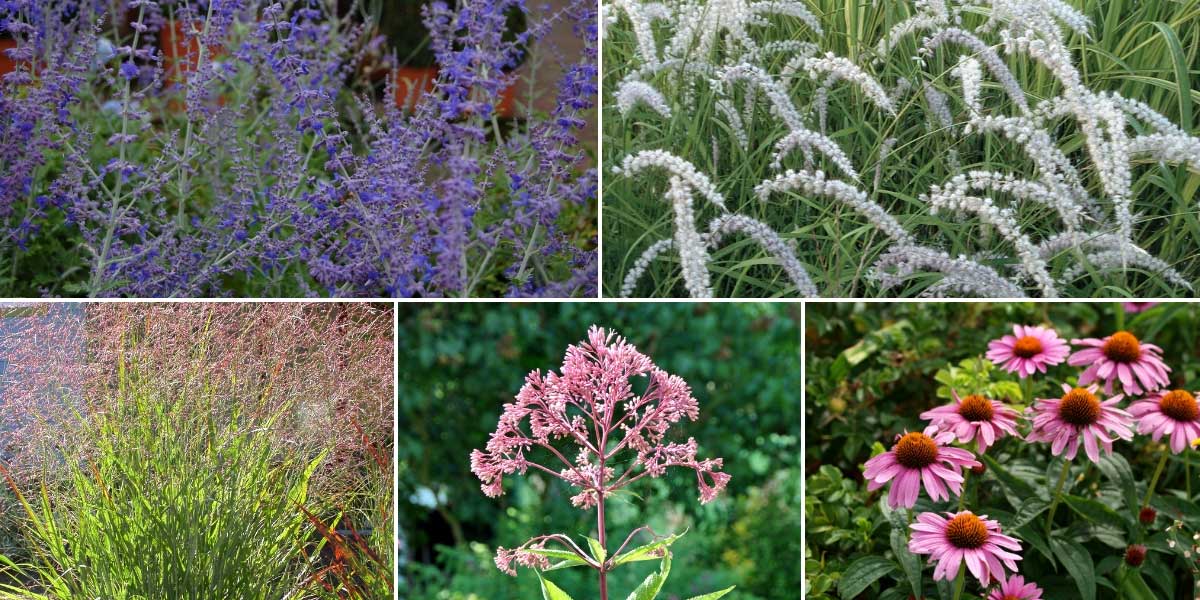

Panicums integrate easily into naturalistic-style gardens. Perovskia ‘Blue Spire’ (photo Andy Mabbett), Pennisetum orientale ‘Tall Tails’, Panicum virgatum (photo Matt Lavin), Eupatorium maculatum (photo Marc Ryckaert) and Echinacea purpurea (photo F.D.Richards)
You can use Panicums to create a low-maintenance garden, alongside other plants that tolerate drought well and don’t require much attention.
Take advantage of Panicums and their very upright habit to design a modern-style garden. Choose architectural plants: ornamental grasses, knotweeds, bamboos… and use them to create a timeless, understated and chic flower bed, ideal for urban gardens. The aim is to favour structural plants that are interesting for their silhouette. You can thus create beautiful contrast effects, for example by placing Panicums alongside plants with more rigid and compact forms, such as boxwoods or yews, santolina, mondo grasses, Hakonechloa macra… Play with shapes by pairing plants with free-flowing, airy forms alongside those with compact, dense foliage! For flowering plants, you might choose agapanthus, Cimicifuga, Eremurus, Allium schubertii…
You can use Panicums to create a stunning autumn scene. Pair them with other plants whose foliage takes on beautiful colours late in the year: Cornus sibirica, Euonymus alatus, Lagerstroemia, Nandina domestica… You’ll achieve a flamboyant flower bed in red, copper, orange, yellow hues… Also enjoy the superb ornamental grass Imperata cylindrica ‘Red Baron’, with foliage tinged bright red. You could also add late-flowering plants like Asters, Dahlias, Colchicum, Persicaria amplexicaulis, Sedum ‘Autumn Joy’, Echinacea, Eupatorium maculatum…
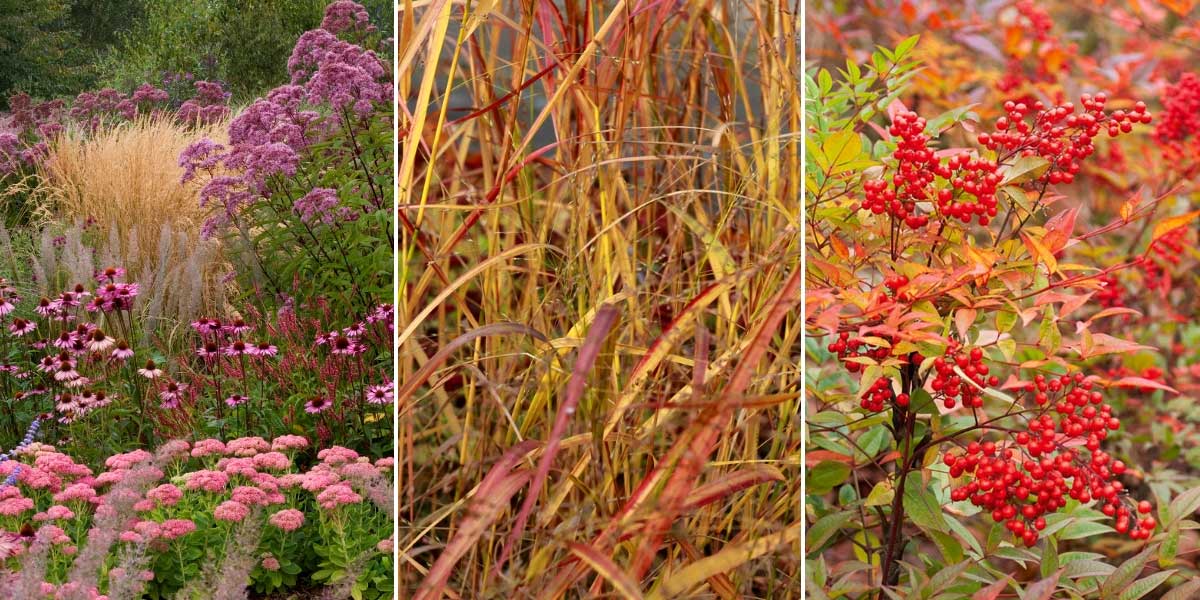

Panicums also allow you to compose beautiful autumn flower beds in warm tones. An autumn scene with Sedum ‘Herbstfreude’, Echinacea purpurea and Eupatorium purpureum / Panicum virgatum (photo Sten Porse) / Nandina domestica
Did you know?
- Ecological benefits
Thanks to its deep root system, Panicum helps improve soil by increasing its permeability, aerating it, and can also be used to stabilise slopes and limit erosion.
It could also be used to produce biofuels.
Moreover, as it’s a drought-tolerant plant that’s rarely affected by diseases or pests, and can grow in poor soil, it’s ideal for an eco-friendly garden that saves water, pesticides and fertilisers!
Useful resources
- Discover our wide range of Panicum
- Explore our selection of Panicum: the best varieties and Our buying guide: Choosing a Panicum
- An article by Ingrid on our blog – 10 ornamental grasses you must have in your garden
- An article by Pierre – Ready, set, prune your ornamental grasses!
- Our guide on planting ornamental grasses
- Our guide on pruning ornamental grasses
- An article by Michael – Ornamental grasses: those you prune, those you trim
- Our guide – Ornamental grasses: Which variety to choose?
- Discover the toughest ornamental grasses
- Discover 5 ornamental grasses with variegated foliage
Frequently asked questions
-
The leaves of my Panicum have orange spots. Why?
Your young plant is likely affected by rust, a fungal disease that can develop if growing conditions are particularly hot and humid. You can treat it using horsetail decoction or a sulphur-based solution, both known for their antifungal properties. However, it's quite rare for Panicum to be affected by this disease, or by diseases in general.
- Subscribe!
- Contents
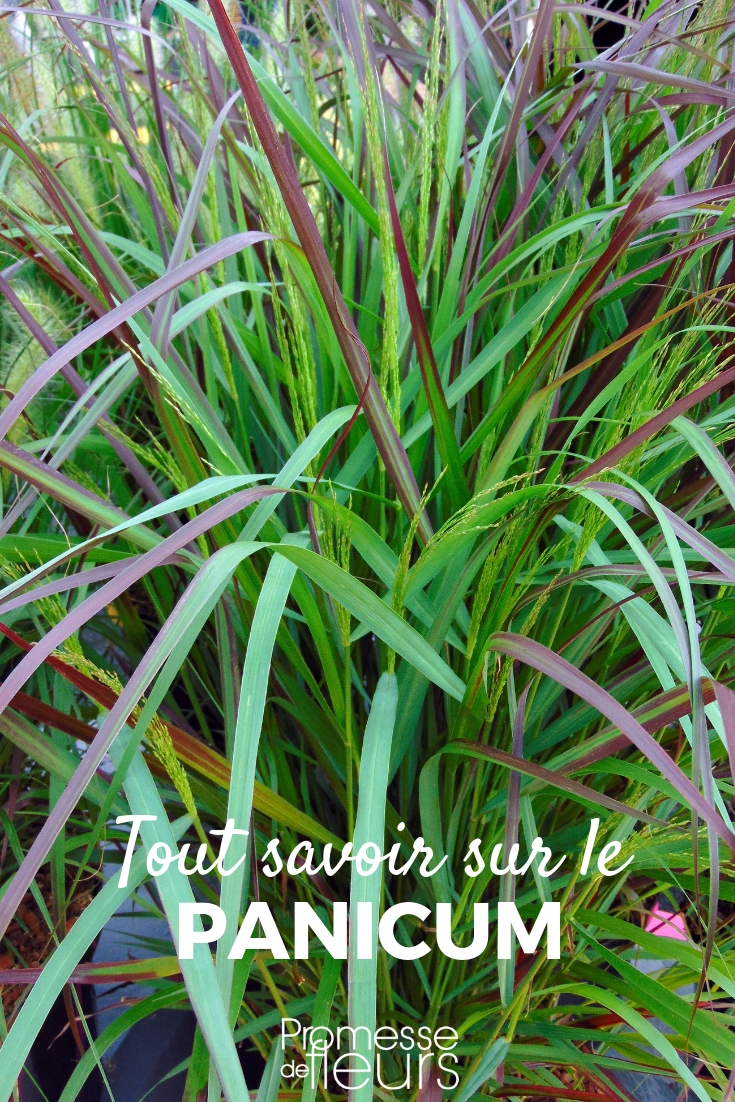


































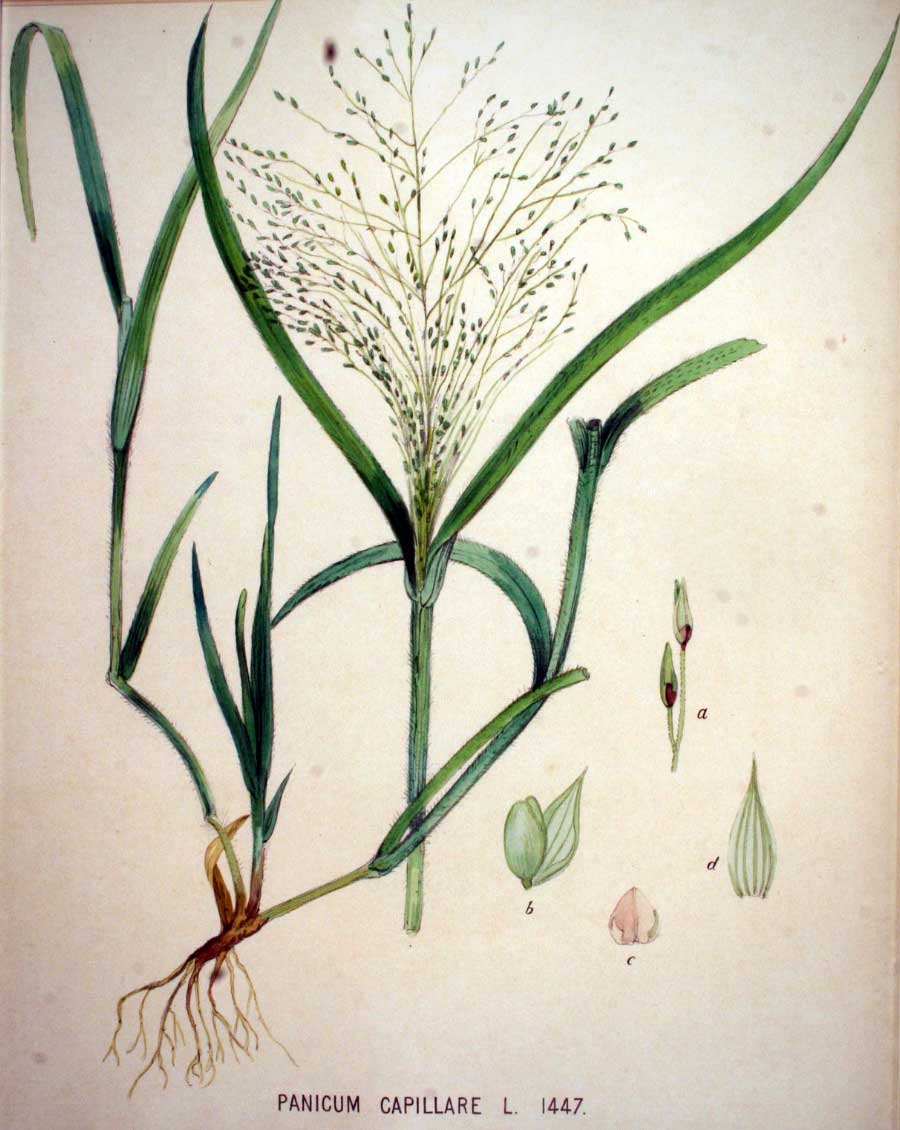
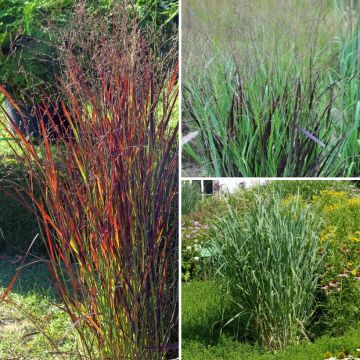





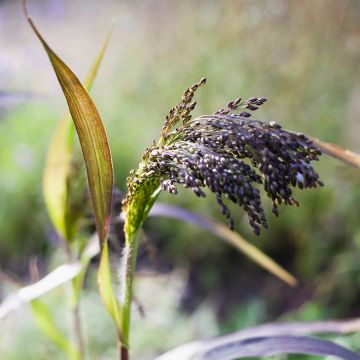


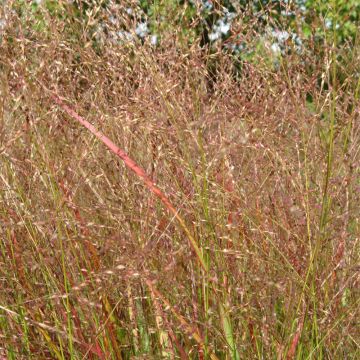
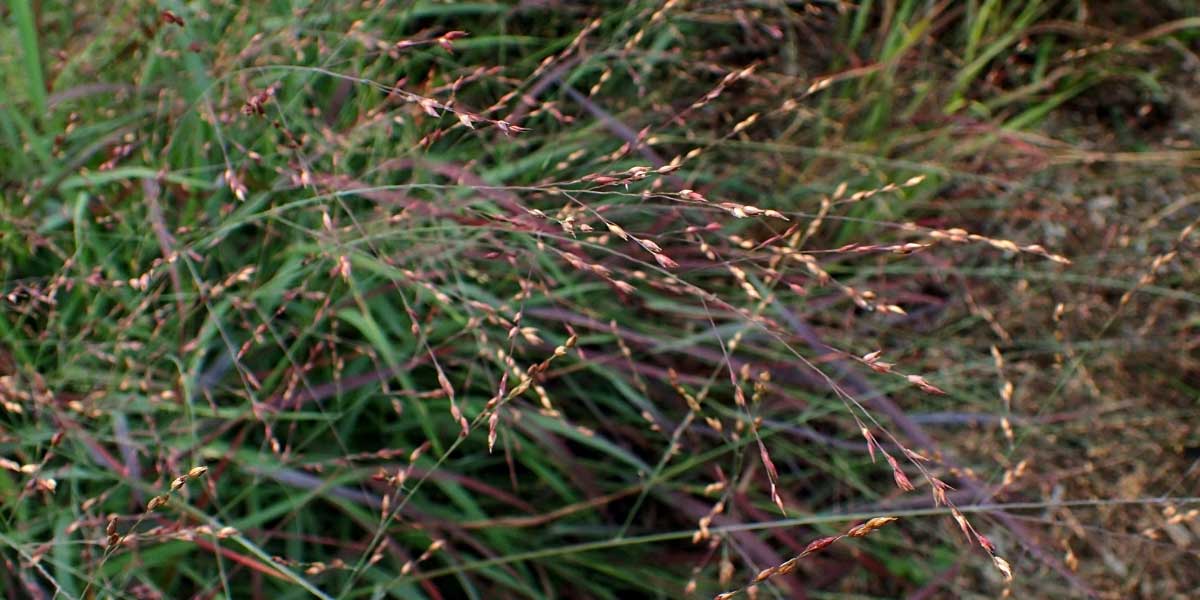
Comments